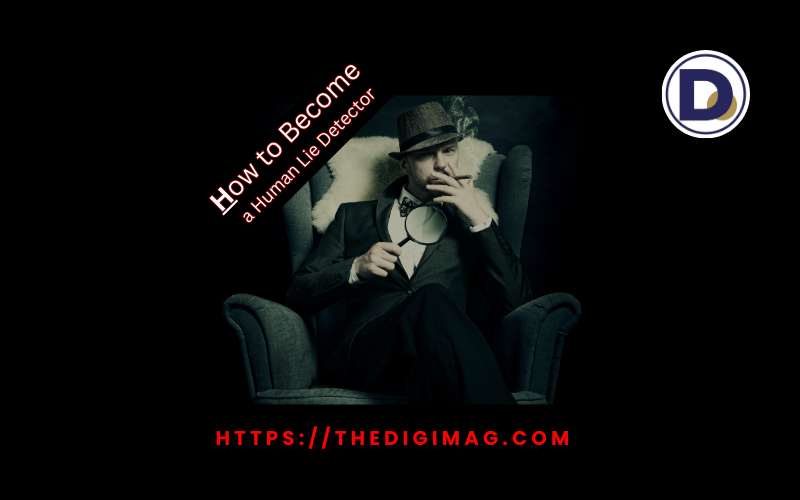Have you ever wished you could tell when someone is lying to you? Whether it’s in a personal relationship, a business meeting, or even during a casual conversation, the ability to detect deception can be a powerful skill.
In this article, we’ll explore how to become a human lie detector, drawing on insights from a former Secret Service agent and expert in interrogation and lie detection. From understanding body language to mastering verbal cues, these techniques will help you read people more effectively and make smarter decisions in your interactions.
The Importance of Baseline Behavior
The first step in detecting lies is establishing a baseline for how someone normally behaves. This involves observing a person’s natural mannerisms, tone of voice, and body language during neutral or non-threatening conversations. For example, if you’re a lie detector meeting someone for the first time, pay attention to how they greet you, their posture, and their eye contact.
- Key Tip: Look for consistency between what someone says and how they say it. If their words and body language are in harmony, they’re likely being truthful. If there’s a disconnect, it could be a red flag.
Body Language: What to Look For
While body language isn’t a foolproof indicator of deception, it can provide valuable clues to the lie detector. It means that context matters. For instance, crossed arms might simply mean someone is cold or comfortable, not necessarily defensive. However, sudden changes in behavior—like shifting from open gestures to closed-off postures—can signal discomfort or dishonesty.
- Fleeing Position: If someone’s body is angled toward the door during a conversation, it could indicate they want to leave or are avoiding the topic.
- Open vs. Closed Gestures: Open arms and relaxed posture suggest confidence and honesty, while closed-off gestures (e.g., crossed arms, avoiding eye contact) may indicate discomfort or deception.
Verbal Cues: Listening Beyond Words
How someone speaks can reveal more than what they say. A lie detector must Pay attention to:
- Stalling Tactics: If someone hesitates, repeats questions, or says things like “Who, me?” they might be buying time to fabricate an answer.
- Overemphasis: Phrases like “I swear to God” or “On my mother’s grave” can be attempts to convince you of their honesty, but they often signal the opposite.
- Possessive Language: Using “my” instead of “the” (e.g., “my car” vs. “the car”) can indicate emotional attachment or deception.
The Role of Eye Contact
Contrary to popular belief, eye contact isn’t a definitive indicator of lying. People break eye contact for various reasons, such as recalling a memory or feeling nervous. Instead of fixating on eye contact, focus on whether their overall behavior aligns with their words.
- Key Insight: If someone consistently avoids eye contact during critical moments, it might be worth exploring further. However, a lie detector shouldn’t to conclusions—context is key.
Paralinguistics: The Power of Tone and Pitch
Paralinguistics refers to the non-verbal elements of speech, such as tone, pitch, and pacing. These elements often carry more weight than the words themselves. It can provide a healthy clue to a lie detector. For example:
- A confident, steady tone conveys authority and trustworthiness.
- A shaky or high-pitched voice may indicate nervousness or dishonesty.
- Pro Tip: When speaking, focus on delivering your message with clarity and confidence. Avoid rushing through your words, as it can undermine your credibility.
ADVERTISEMENT.

Handling Difficult Conversations
One of the most challenging aspects of detecting lies is confronting someone without making them defensive. A lie detector should never call people out directly. Instead, gather information quietly and use it to guide your decisions.
- Example: If you suspect a loved one is hiding something, observe their behavior and ask open-ended questions. Their reactions—or lack thereof—will often reveal the truth without the need for confrontation.
Trusting Your Gut
A lie detector must appreciate the importance of trusting his instincts. If something feels off, it probably is. However, don’t let emotions cloud your judgment. Instead, focus on gathering objective data and making informed decisions.
- Key Takeaway: Your gut feeling is a powerful tool, but it should be backed by observable evidence. Don’t ignore red flags, but don’t jump to conclusions without proof.
Practical Steps to Become a Human Lie Detector
- Observe Baseline Behavior: Pay attention to how someone acts in neutral situations.
- Look for Inconsistencies: Notice if their words, tone, and body language align.
- Listen for Verbal Cues: Watch for stalling tactics, overemphasis, or possessive language.
- Master Paralinguistics: Focus on how you speak and how others communicate non-verbally.
- Trust Your Instincts: If something feels wrong, investigate further.
Conclusion
Becoming a human lie detector isn’t about becoming a mind reader—it’s about paying attention and trusting your instincts. By observing body language, listening for verbal cues, and staying grounded in your interactions, you can uncover the truth and make better decisions in both personal and professional settings.
As Evy Poumpouras wisely advises, “Handle your stuff.” Don’t avoid difficult conversations or ignore red flags. Instead, take responsibility for understanding the people around you and acting on what you learn.
Source Acknowledgement: Photo by Sander Sammy on Unsplash
Suggested Reading: Master the Art of Reading People.




